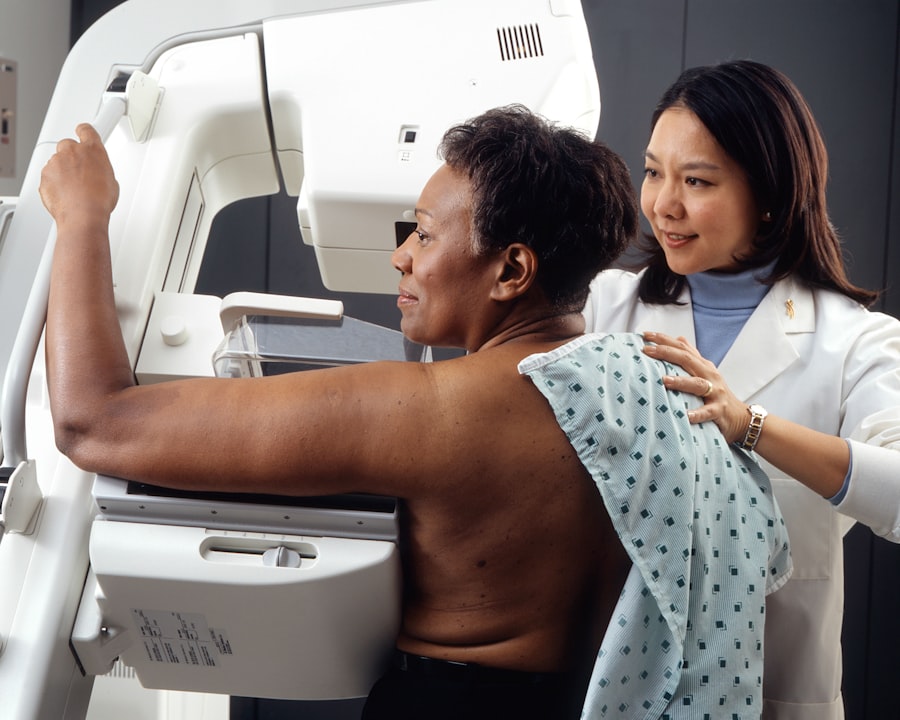Laser hair removal is a medical procedure that utilizes concentrated beams of light to eliminate unwanted hair. The technology behind this method is based on the principle of selective photothermolysis, where specific wavelengths of light are absorbed by the pigment in the hair follicles. This absorption generates heat, which effectively damages the follicle and inhibits future hair growth.
The procedure is most effective on individuals with light skin and dark hair, as the contrast allows the laser to target the melanin in the hair more efficiently. The process involves several sessions, typically spaced a few weeks apart, to achieve optimal results. This is because hair grows in cycles, and lasers are most effective during the anagen phase, or the active growth stage.
Not all hair is in this phase at the same time, which is why multiple treatments are necessary to catch all hair follicles in their growth cycle. Various types of lasers are used in this procedure, including Alexandrite, Diode, and Nd:YAG lasers, each with its own specific applications and effectiveness depending on skin type and hair color.
Key Takeaways
- Laser hair removal uses concentrated light to target and destroy hair follicles, leading to permanent hair reduction.
- The benefits of laser hair removal include long-lasting results, reduced ingrown hairs, and smoother skin.
- Good candidates for laser hair removal are individuals with light skin and dark hair, as the laser targets the pigment in the hair.
- Before laser hair removal, it’s important to avoid sun exposure and certain hair removal methods to ensure the best results.
- During laser hair removal, patients can expect a mild discomfort and may need multiple sessions for optimal results.
Benefits of Laser Hair Removal
Long-Term Effectiveness
Unlike traditional methods such as shaving or waxing, which provide only temporary results, laser hair removal can lead to a significant reduction in hair growth over time. Many patients experience permanent hair loss after completing a series of treatments, making it a cost-effective solution in the long run.
Precision and Speed
The precision of laser technology minimizes damage to surrounding skin, reducing the risk of irritation and ingrown hairs that often accompany other hair removal methods. The speed of the procedure is also notable, with each pulse of the laser taking only a fraction of a second and able to treat multiple hairs simultaneously. Small areas like the upper lip can be treated in under a minute, while larger areas such as the back or legs may take longer but are still completed relatively quickly compared to other methods.
Many modern lasers come equipped with cooling devices that help soothe the skin during treatment, significantly reducing discomfort.
Who is a Good Candidate for Laser Hair Removal

Ideal candidates for laser hair removal typically have light skin and dark hair due to the contrast that allows lasers to target hair follicles effectively. However, advancements in technology have expanded the range of suitable candidates. Individuals with darker skin tones can also benefit from laser hair removal, provided that the practitioner uses appropriate laser settings to minimize risks.
It is essential for potential candidates to undergo a thorough consultation with a qualified dermatologist or licensed technician who can assess their skin type and hair color to determine the best approach. Certain medical conditions may affect candidacy for laser hair removal. For example, individuals with active skin infections, certain autoimmune disorders, or those who are pregnant may be advised against undergoing the procedure until their condition changes.
Additionally, those who have recently tanned their skin or used certain medications that increase photosensitivity should discuss their options with a healthcare provider. Ultimately, a comprehensive evaluation will help ensure that candidates are well-informed about their suitability for laser hair removal.
Preparing for Laser Hair Removal
| Aspect | Information |
|---|---|
| Preparation | Avoid sun exposure and tanning beds for at least 6 weeks before treatment |
| Shaving | Shave the treatment area the day before the appointment |
| Medications | Avoid certain medications like blood thinners before the procedure |
| Clothing | Wear comfortable clothing to the appointment |
Preparation for laser hair removal is crucial for achieving optimal results and minimizing potential side effects. Before undergoing treatment, candidates should avoid sun exposure for at least four weeks prior to their appointment. Tanning can increase the risk of complications and reduce the effectiveness of the laser treatment.
Additionally, individuals should refrain from waxing or plucking hair in the treatment area for several weeks leading up to their session, as these methods remove the hair follicle that the laser targets. During the initial consultation, practitioners will typically provide specific instructions tailored to each individual’s needs. This may include recommendations on skincare products to avoid prior to treatment and guidelines on shaving the area to be treated.
Shaving is often encouraged as it allows the laser to focus on the follicle without interference from surface hair. Patients should also disclose any medications they are taking, as some can affect skin sensitivity or healing processes. Proper preparation sets the stage for a successful treatment experience.
What to Expect During Laser Hair Removal
During a laser hair removal session, patients can expect a series of quick pulses from the laser device directed at the treatment area. Most practitioners will apply a topical anesthetic to minimize discomfort before starting the procedure. Patients often describe the sensation as similar to a rubber band snapping against the skin, followed by a brief warming sensation as the laser targets each follicle.
The duration of each session varies depending on the size of the area being treated; smaller areas may take just minutes while larger areas could take up to an hour. The practitioner will typically use protective eyewear to shield both themselves and the patient from the intense light emitted by the laser. As each pulse is delivered, patients may feel slight discomfort but should be able to tolerate it well due to modern advancements in laser technology that enhance comfort levels.
After completing the treatment, practitioners may apply soothing gels or ice packs to alleviate any immediate redness or swelling in the treated area.
Aftercare and Recovery from Laser Hair Removal

Sun Protection
Avoiding sun exposure for several weeks after treatment is vital to prevent hyperpigmentation or irritation in the treated area. Using sunscreen with a high SPF is crucial during this period to protect sensitive skin from UV rays.
Skincare Routine
Refrain from using harsh skincare products or exfoliants for at least a week post-treatment to allow your skin to heal properly. This will help prevent any further irritation and ensure a smooth recovery.
Managing Discomfort
It’s common to experience mild redness or swelling immediately after treatment, similar to a sunburn. Applying cool compresses can help alleviate discomfort during this time. Additionally, avoid hot baths, saunas, or vigorous exercise for 24-48 hours post-treatment to minimize irritation and allow your skin to recover fully.
Potential Risks and Side Effects of Laser Hair Removal
While laser hair removal is generally considered safe when performed by qualified professionals, there are potential risks and side effects that candidates should be aware of before undergoing treatment. Common side effects include temporary redness, swelling, and mild discomfort in the treated area. These symptoms usually resolve within a few hours but can persist for several days in some individuals.
Scarring is another rare but possible complication if proper aftercare instructions are not followed or if an inexperienced practitioner performs the procedure. It is crucial for patients to discuss these risks during their consultation and ensure they are comfortable with their provider’s experience and qualifications.
Finding a Qualified Dermatologist for Laser Hair Removal
Selecting a qualified dermatologist or licensed practitioner for laser hair removal is paramount for ensuring safety and effectiveness. Prospective patients should seek out professionals who are board-certified dermatologists with extensive experience in performing laser procedures. Checking credentials and reviews from previous patients can provide valuable insight into a practitioner’s skill level and patient satisfaction.
During initial consultations, individuals should feel empowered to ask questions about the types of lasers used, expected outcomes, and any potential risks associated with their specific skin type and hair color. A reputable practitioner will take time to explain each step of the process and tailor their approach based on individual needs. Additionally, they should provide clear aftercare instructions and be available for follow-up consultations if any concerns arise post-treatment.
By choosing a qualified professional, patients can enhance their chances of achieving successful results while minimizing risks associated with laser hair removal.
If you are looking for a reliable provider of laser hair removal services, look no further than In Laser Hair Removal. Their team of professionals offers customizable treatments to suit your specific needs and interests. In fact, they were recently featured in a fashion article discussing the latest trends in laser hair removal. To learn more about their services and how they can help you achieve smooth, hair-free skin, visit their website at https://www.inlaserhairremoval.com/fashion-home-3/.
FAQs
What is laser hair removal?
Laser hair removal is a cosmetic procedure that uses a laser to remove unwanted hair from the body. The laser targets the hair follicles, heating them and damaging the follicle to inhibit future hair growth.
Who can provide laser hair removal?
Laser hair removal should be performed by a licensed and trained professional, such as a dermatologist, plastic surgeon, or licensed technician at a medical spa or laser clinic.
Are there any qualifications required to provide laser hair removal?
In most countries, individuals providing laser hair removal must be licensed and certified to perform the procedure. They should have completed specific training and education in laser hair removal techniques and safety.
What should I look for in a provider of laser hair removal?
When seeking a provider for laser hair removal, it is important to ensure that they are licensed, experienced, and have a good reputation. It is also important to inquire about the type of laser technology they use and any potential risks or side effects associated with the procedure.
Can I perform laser hair removal at home?
While there are at-home laser hair removal devices available, it is generally recommended to have the procedure performed by a licensed professional. At-home devices may not be as effective or safe as those used in a professional setting.





